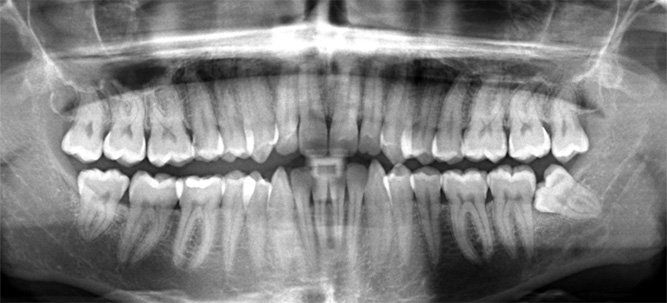A panoramic radiograph is usually taken prior the removal of wisdom teeth. The position of the teeth, presence of pathology, available space, root length, inclination and size of the teeth will be assessed.

The extraction of wisdom teeth is necessary when they are prevented from properly erupting into the mouth. They may grow sideways, partially emerge in the mouth, and even remain trapped beneath the gum within the jaw. These impacted teeth can eventually cause severe infections, cavities and move other teeth. The most serious complications occur when tumors or cysts form around the impacted wisdom teeth, resulting in the destruction of the jawbone and healthy adjacent teeth. The early removal of the third molar tooth usually avoids these problems and decreases surgical risks involved with the procedure.
A panoramic radiograph is usually taken prior the removal of wisdom teeth. The position of the teeth, presence of pathology, available space, root length, inclination and size of the teeth will be assessed. An examination of the mouth is also required before removal. The removal of wisdom teeth is performed under local anesthesia, nitrous oxide (laughing gas), intravenous sedation or general anesthesia. These options, as well as the surgical risks, will be discussed with you at the consultation visit. For more information about the recommendations before and after surgery, please visit our preoperative and postoperative pages.
A panoramic radiograph is usually taken prior the removal of wisdom teeth. The position of the teeth, presence of pathology, available space, root length, inclination and size of the teeth will be assessed.

